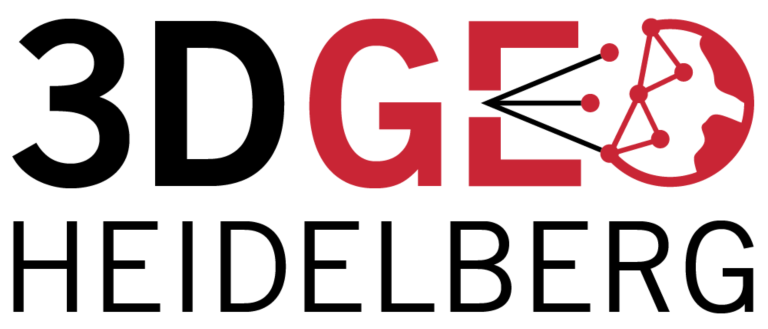Category: Lidar Group
-
Successful kickoff meeting for project ‘3D-TAIGER’ at National Cheng Kung University in Tainan
From April 5th till April 9th , the three GIScience members Bernhard Höfle, Kristina Koenig, and Martin Hämmerle visited colleagues at the National Cheng Kung University (NCKU), Tainan, Taiwan, within the frame of the collaboration and exchange project 3D-TAIGER (‘Multi-Source 3D Geoinformation Extraction for Improved Management of Forest and Natural Hazards – Collaboration between TAIwan…
-
3D Participatory Sensing for Crop Height Assessment
Participatory Sensing (PS) is a concept which enables laymen to easily gather geodata with standard low-cost mobile devices, offering new and efficient opportunities for agricultural monitoring. The integration of local agricultural knowledge may help to better understand complex phenomena such as the association between climate variability, crop yields and undernutrition. In our new study we…
-
Autonomously Operating Low-Cost Static Terrestrial LiDAR
In order to optimize agricultural processes, near real-time spatial information about in-field variations, such as crop height development (i.e., changes over time), is indispensable. This development can be captured with a LiDAR system. However, its applicability in precision agriculture is often hindered due to high costs and unstandardized processing methods. In our new study we…
-
3D-TAIGER: Multi-Source 3D Geoinformation Extraction for Improved Management of Forest and Natural Hazards
New DAAD/MOST project will enable intensive exchange between Taiwan and Germany in 2016-17 The main scientific objective of 3D-TAIGER‘s exchange and collaborative research is the development of new methods for the automatic extraction of 3D geoinformation related to forests and natural hazards in Taiwan using multi-source remote sensing data. The project 3D-TAIGER is an international…
-
LiDAR Processing Short Course – Combining 3D Laser Scanning with Geological Research
Following up on the joint field trip to the Peloponnese in Greece this spring, the GIScience Group, welcomed Lisa Bingham and Andreas Habel, two scientists from the University of Stavanger, Department of Petroleum Engineering, for a two-day workshop (Dec 9 and 10, 2015) on LiDAR processing. The main objective of the LiDAR workshop was to…
-
Vorbesprechung GP/Übung: Physiogeographische Geodatenerfassung im Hochgebirge (Ötztal)
Die Veranstaltung “Physiogeographische Geodatenerfassung im Hochgebirge (Ötztal)” wird im Sommersemester 2016 zwischen 31.07.2016 und 06.08.2016 in Obergurgl, Tirol, Österreich, durchgeführt. Die verpflichtende Vorbesprechung findet am Fr. 11.12, 12:00 s.t., R015/INF348, statt. Die Veranstaltung ist eine Zusammenarbeit zwischen Geoinformatik und Physiogeographie und bietet erstmals die einzigartige Möglichkeit verschiedenste Methoden der Geodatenerfassung an einem der schönsten und…
-
Public Workshop – Multidimensional Perceptibility of Cultural Heritage (MUSIEKE)
Workshop: Kulturerbe: Erfassbar – Sichtbar – Erfahrbar Ergebnisse und Erfahrungen aus Forschungsprojekten zur Sicht- und Erfahrbarmachung von Kulturerbe 1. Dezember 2015 09:30-15:00 Uhr ZAK | Zentrum für Angewandte Kulturwissenschaft und Studium Generale Rüppurrer Str. 1a, Haus B 76137 Karlsruhe Zur Anmeldung Flyer (PDF, ca. 1MB) Programm 9:30-9:45 Get Together 9:45-9:55 Prof. Dr. Caroline Y. Robertson-von…
-
3D-MicroMapping of Big 3D Geo-Datasets in the Web (3D-MAPP)
Our new research project 3D-MAPP develops a web-based methodology to obtain digital geodata via the combination of data analysis by human and machine. Through a quick and easy-to-use 3D Web visualization users are able – in a few seconds – to solve 3D micro mapping tasks, which can hardly or even not be solved by…
-
Being a Polar Researcher
Mid of October Inga Beck was invited by a local primary school to talk about her research and to give the students an impression about the work of a Polar Researcher. The entire school (around 200 children and 15 teachers) gathered in the assembly hall of the school and listened carefully to the presentation. Beside…
-
Talk ‘3D-Geoinformation aus Laserscanningdaten’ at workshop ‘The future courtroom’
At Thursday, 22nd of October, the GIScience LiDAR Research Group (LRG) contributed to the workshop ‘The future courtroom‘ (website in German) with a talk introducing the analysis of 3D Geodata and the connections to forensic science. Martin Hämmerle presented a selection of LRG projects covering a wide range of applications and use cases, from crowd…
-
Second expedition in the Mackenzie Delta
Mid of August we started for our second field trip in the Canadian Arctic. This time the team consisted of Inga Beck, Sabrina Marx and Detlef May. As Sabrina already joined the trip in June, many things – such as customs, security etc. worked much easier than in June. We only had very little time…


